Ethanol in Petrol, engine coolant and tyre pressures
Traction Owner’s Club › Forums › Technical › Engine › Ethanol in Petrol, engine coolant and tyre pressures
- This topic has 28 replies, 9 voices, and was last updated 4 years, 2 months ago by Dave Thornley.
-
AuthorPosts
-
3rd March 2019 at 11:27 am #24513
David Faulkner
ParticipantRoger, that’s what we suspect as well adding in the effects of the badly corroded water tube but the difference between the old and new valves is even visually quite different.
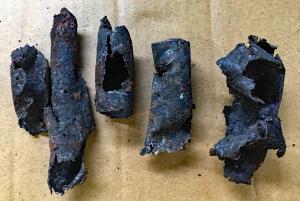
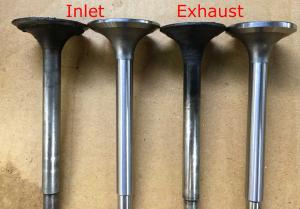
Chris, my neighbour had a 6 cylinder BMW that had 1 bent con rod, suspected cause water ingestion, as water doesn’t compress, the con rod bent…
3rd March 2019 at 7:39 pm #24522Roger Grix
ParticipantHi David,
Looking at the valves, I think that they have been ground too far. I can’t find a reference but I seem to remember from my early motorcycling days that refacing the valves should not reduce the edge thickness below about 1 mm because of overheating on the edge. Obviously, the thinner the valve head, the less heat conduction from the passing hot gas.
Roger
29th June 2019 at 6:53 pm #25101Rod Robbins
ParticipantHi All, Can I stick my oar in and ask an almost related question? Although being 71 years old, me, not the car, I still consider myself a novice mechanic. The car a 1953 Slough L.15, does not get asked to do much, so when ,with a cold engine, I took the radiator cap off, I was surprised to see the,( green) liquid churning around, is this normal? Does it mean thermostat stuck? Could there be a blockage in the radiator/block? . I am a natural worrier and this is not helping with the grey hairs……
For the record “ Celeste” is still cosmetically challenged, but starts and runs well, if a little hot.
Kind Regards
Rod
29th June 2019 at 7:35 pm #25102David Faulkner
ParticipantGreen liquid sounds like the environmentally friendly stuff Citroen Classics sell (I have it in my 52 Legere) – yes you should see the coolant swirling around as the Traction doesn’t have a thermostat as standard in the system so the coolant is circulated all the time which is why they take a while to warm up.
If yours is running hot, then that is fairly common, to resolve it you could try checking the timing as too far advanced can cause overheating, you could also try flushing the system and possibly replacing the water pump as the impeller could be worn (a local member had overheating problems until he replaced his) or get the radiator re-cored. I got mine done with a modern, in line 4 cores for £220 locally and have no overheating issues now, if anything, the car runs on the cool side outside the summer months.
Depending on how you use the car, some owners have fitted a thermostat in the top hose DS style, but the majority don’t have one. In winter you can source and fit a roller blind which helps things warm up faster.
1st July 2019 at 5:21 pm #25103Bernie
Participant…. and if all that fails, ther is every possibility that the water jacket in the block is silted up, specially if it is a long time since anything was done to it.
Try removing the engine drain plug – on the left close to the distributor. If the coolant does not flow very freely wth the plug out then the block is almost certainly clogged up. (Don’t forget to place a contaimer underneath to catch the liquid so you do not loose your ant-freeze).
I had a Light 15 that was overheating even in winter. When we removed the drain plug the coolant did not flow at all and we finally put a 6mm drill bit in to clear a passage. There is little room on a Light 15 so that was not easy and the bit had to be “twiddled” by hand. I reckon we drilled over 30mm through solid compacted silt before breaking through to the coolant. The only way to cure that was to open the engine and literally chisel the crud out of the block.
B……………….
1st July 2019 at 7:08 pm #25104Rod Robbins
ParticipantThank you for your replies. It sounds like a bit of a can-o-worms, so I will probably start at the quick/cheap/easy end of the list.
At least I have a direction to go now. I shall drive her with renewed confidence. Thank you all.
Rod.
1st July 2019 at 8:15 pm #25105Editor FP
ParticipantIf it is ultimately suspected that the engine block is partially bunged up with sediment (which seems less likely if your coolant looks clean), then there are proprietary engine flush liquids to try before you resort to a hammer and chisel.
2nd July 2019 at 8:00 am #25108David Faulkner
ParticipantRod, one other thing we ought to mention, have you checked that the fan blade is on the right way around? It’s an easy mistake to make and the fan blade on my own car was fitted the wrong way around when I bought it.
It can make a difference, so, visually the ‘concave side should be toward the engine, i.e. looking at the blades the raised part of the ridge down each blade should be facing the radiator with the dished part toward the engine as seen in the image. Having it the correct way around ensures the maximum ‘pull’ of air at idle when sat in traffic when coolant circulation is at it’s lowest. Also check that the spacers between the pulley and blade are in place. These are all minor things with minimal cost to rectify.
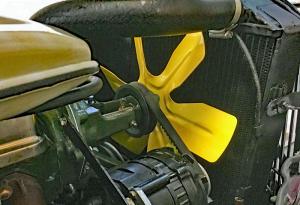 8th June 2020 at 10:04 pm #26842
8th June 2020 at 10:04 pm #26842David Selfridge
ParticipantHi, What do the Forum members think of this product, supplied by Jose Franssen. I tin per fill up of fuel at 9.00 €, 250ML
They say: E10 Fuel Protector, Adding this additive to every refuelling with E10 gasoline (maximum 10% ethanol) negates the negative effects of ethanol!
What’s your thoughts everyone.
Davy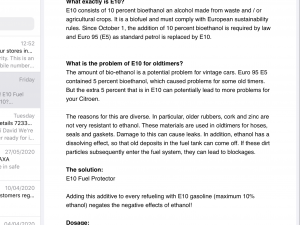
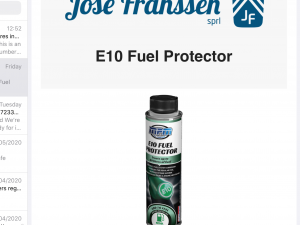 8th June 2020 at 10:43 pm #26843
8th June 2020 at 10:43 pm #26843Ron
ParticipantRe Ethanol in petrol, I remember reading on some American forum that it is perfectly possible to remove ethanol from petrol, and don’t quote me here, by adding water to a gallon or more and shaking it until the ethanol dissolves in the water then leaving it to settle in a container with a bottom tap. Once settled the water mixture can be drained off leaving ethanol free petrol. No idea if it works or, more to the point, if its safe to mess with petrol in this way, seems very unwise to me, let alone the extraordinary faffing involved!! Don’t think I’ll be trying it but it’s amazing what some people will do! That’s lockdown for you. Ron
9th June 2020 at 8:43 am #26846Bernie
ParticipantFolks,
Yes, ethanol can be removed with water and there are “kits” on the market to do it.
However, it requires decanting fuel several times which is not best practice at home. In addition, it is a slow process and the kits normally only handle 10 litres at a time so a tankful is not a 5 minute job.
Last year we considered and discussed it at length in a local all-makes club and one member bought a kit. In the end, the conensus was that it is not a practical solution for anybody who uses more than a gallon a week and, from a safety point of view, probably best avoided.
B……
9th June 2020 at 9:11 am #26848David Faulkner
ParticipantHi, What do the Forum members think of this product, supplied by Jose Franssen. I tin per fill up of fuel at 9.00 €, 250ML
They say: E10 Fuel Protector, Adding this additive to every refuelling with E10 gasoline (maximum 10% ethanol) negates the negative effects of ethanol!
I looked at that as well David and there are lots of ‘alternatives’ available out there in the UK so maybe stick to something like e.g. Duckhams Classic Fuel Treatment, endorsed by the Federation of British Historic Vehicle Clubs (FBHVC), which does this, protecting metals and fuel lines from ethanol corrosion while also combating valve seat recession.
FBHVC, which TOC is a member of have a good page on fuel and additives which is worth reading https://fbhvc.co.uk/fuels
It does include a list of materials good and bad used in conjunction with petrol containing ethanol
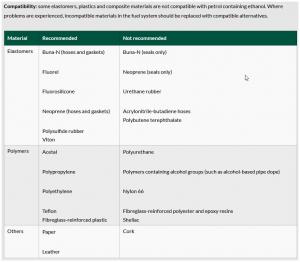 16th June 2020 at 10:32 pm #26903
16th June 2020 at 10:32 pm #26903David Selfridge
ParticipantDavid, Thanks for that, interesting reading indeed.
Davy
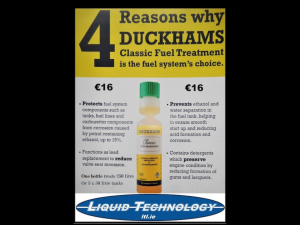
- This reply was modified 5 years, 6 months ago by David Selfridge.
26th September 2021 at 4:38 am #28825Dave Thornley
ParticipantEsso Synergy Supreme+99 is the only current ethanol free petrol as far as I know. Not cheap I paid £1.55/litre for it. Plus not available in certain parts of the country ethanol free.
-
AuthorPosts
- You must be logged in to reply to this topic.
